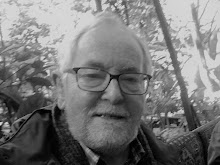Advent: Reflections on
visit to the Holy Land
Our eleven days pilgrimage in Israel and Palestine last month were remarkable,
enjoyable and challenging. They will take time to process and reflect on. We were blessed with excellent leadership from Geoffrey Marshall; and better than average weather for the seaspn.
Where to begin? Perhaps we should note the remarkable
fact that pilgrims are still visiting Jerusalem and the other Holy Sites – in
large numbers. Despite uncertainties about the security situation, there were
crowds of visitors from the UK, USA, Nigeria, Brazil, Russia, France, Italy and
more. No doubt fror a few it was just another holiday – from Chaucer’s time,
pilgrimages have had something of the package holiday about them. But something
was driving people to queue patiently in the Church of the Nativity, Bethlehem
for up to 2 hours, to gain a few moments in the crypt chapel that marks the
site of Jesus’ birth.
What draws them? Many of these places are charged with
significance, with memories and with allusions. They are places where ‘prayer
has been valid’ for centuries; places which remind us of the remarkable claim
that God has acted in – intervened in – human history, at specific times and in
specific places.
In an important sense, we can only worship God in England
on a Sunday at the end of 2014, because he
spoke to Abraham in various parts of Palestine, to Gideon at the springs of
Harod, to Mary at the well in Nazareth, to Jesus at the Jordan and in the
Judean wilderness. We can only meet the Risen Christ in our weekly eucharists
all over the world, because Jesus
broke bread with his disciples in the Upper Room, prayed in agony in
Gethsemane, carried the cross along the Via Dolorosa, suffered and died on
Golgotha and rose from the tomb in a garden somewhere nearby. We can only be
guided by the Holy Spirit today, because
on the Day of Pentecost, 33 AD, the disciples on the steps to the Temple
Mount were filled by his power and enabled to preach in tongues.
The danger of the gilded palaces that have been built on
the holy sites is that they obscure tyhe ordinariness. Frederck Buechnner wrote
of Jesus’ birth:
If holiness and the awful power and majesty of God were
present in this least auspicious of all events, this birth of a peasant's
child, then there is no place or time so lowly and earthbound but that holiness
can be present there too."
So, although the places we can visit in Jerusalem, Judea
Palestine and Galilee are not exactly the same as those that Abraham, Isaiah,
John the Baptist and Jesus knew, they remind us that we are not imagining things,
or creating our own stories. We are responding to events and places that real
people – like us – experienced and knew.
For those privileged to have gone to the ‘Land of the
Holy One’ (as the Anglican Church in Jerusalem prefers to call it), our reading
of the Bible takes on a new freshness and liveliness. ‘That’s where Zaccheus climbed the tree to see Jesus.’ ‘That’s where the paralysed man was
lowered through the roof.’ ‘That’s where
Lazarus was called out of the tomb.’ ‘That’s
where Jesus’ body lay for three days before the Marys found the tomb
empty.’
Pilgrimage is not necessary. Unlike the hajj for Muslims,
it’s not required of Christians, and there are many who are unable to go to the
holy sites who have a deeper and more lively faith and commitment than those
who have.
But for all who have eyes to see and ears to hear, the
privilege of this experience means we shall not be the same again.


0 Comments:
Post a Comment
Subscribe to Post Comments [Atom]
<< Home